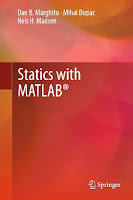Nonlinear Ordinary Differential Equations: Problems and Solutions
D. W. Jordan, Peter Smith ... 450 pages - Publisher: Oxford University Press; (October, 2007) ... Language: English - ISBN-10: 0199212031 - ISBN-13: 978-0199212033 ...
An ideal companion to the new 4th Edition of Nonlinear Ordinary Differential Equations by Jordan and Smith (OUP, 2007), this text contains over 500 problems and fully-worked solutions in nonlinear differential equations. With 272 figures and diagrams, subjects covered include phase diagrams in the plane, classification of equilibrium points, geometry of the phase plane, perturbation methods, forced oscillations, stability, Mathieu's equation, Liapunov methods, bifurcations and manifolds, homoclinic bifurcation, and Melnikov's method. The problems are of variable difficulty; some are routine questions, others are longer and expand on concepts discussed in Nonlinear Ordinary Differential Equations, and in most cases can be adapted for coursework or self-study. Both texts cover a wide variety of applications while keeping mathematical prequisites to a minimum making these an ideal resource for students and lecturers in engineering, mathematics and the sciences.



















